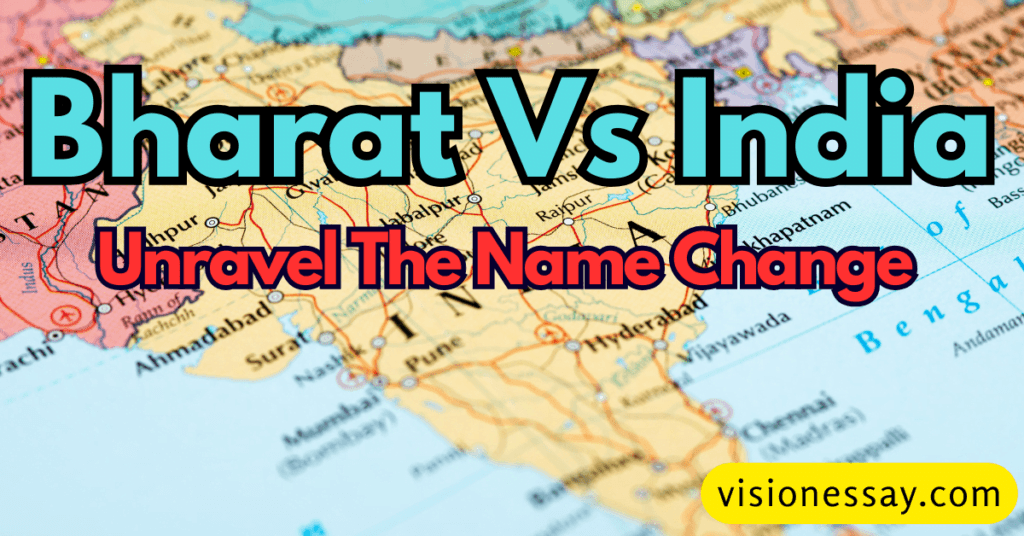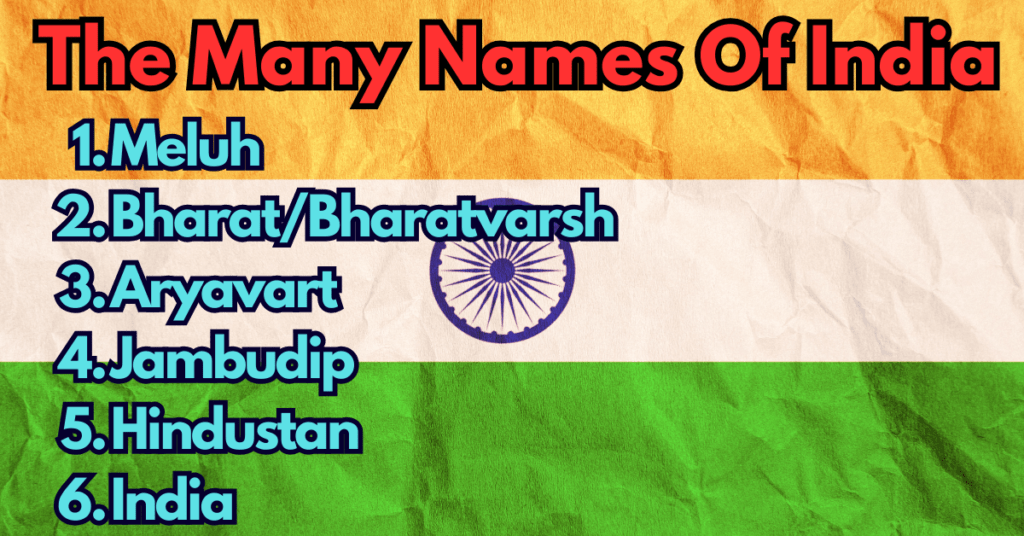
Introduction
India is referred to as “Bharat” in historical and ideological contexts and as “India” in legal and diplomatic contexts. Due to the emergence of the opposition group known as INDIA (Indian National Developmental Inclusive Group), the usage of these names has taken on a political connotation.
What is the Historical Background of Bharat & India?
- Origins of the Names: The word “India” and its translations, such as “Hind” in Arabic, have foreign roots. The area south and east of the Indus or Sindhu River has historically been referred to by these names by foreigners.
- Historical Usage: The northern parts of the Indian subcontinent were referred to as “Hindustan” throughout the Afghan and Mughal eras.
Later, colonial powers in Europe, notably the British, used the term “India” to refer to both the entire subcontinent and only the northern section. It was mostly a geographical identifier to them. - Name Controversy: Muhammad Ali Jinnah’s Muslim League expressed disapproval of the term “India” being used to refer to the newly formed country. They claimed that the Muslim-majority parts should be acknowledged as a separate country, Pakistan, and that “India” should be identified with the Hindu-majority regions.
- Synchronic Word–Hind: People like Netaji Subhas Chandra Bose pushed for the use of the syncretic word “Hind,” which could be embraced by a diverse population, including those of other faiths. Expressions like “Jai Hind” demonstrate how “Hind” is still used today and how important it is to Indian culture.

How “Bharat” and “India” are Balanced?
- Adoption of the Constitution: The Constituent Assembly initially ratified the Indian Constitution in English. This demonstrates the significance of the English translation as the Constitution’s founding text both historically and legally.
- Publication of a Hindi Translation: The Constitution was translated into Hindi and published alongside the English version in 1950. The Constituent Assembly members signed this translation, which was completed in compliance with a decision adopted by the assembly.
- Official Status of Both Versions: The Constitution is available in both English and Hindi, underscoring its official significance within the Indian legal system. It emphasizes how crucial it is to make the Indian Constitution accessible in both Hindi and English.
- Constitutional Amendments: Hindi and English usage in official papers, court cases, and government communications are probable topics covered by the 58th Amendment to the Constitution, which was passed in 1987.
- Article 1(1): The name and characteristics of the nation are set out in Article 1(1) of the Constitution. “India, that is Bharat, shall be a Union of States,” it says in the English translation, emphasizing “India” as the main term.
What is the Current Scenario?
- Use of “India” Internationally: The use of “India” At the international level, India has consistently referred to itself as “India” in all forums that are multilateral and/or international. This indicates that the term “India” is linked to the nation’s identity and worldwide recognition.
- Dual-Language Approach: India is known for using two languages in official documents and diplomatic settings. The phrases “Rashtrapati” and “Bharat Gantantra” are inscribed in Hindi beneath the National Emblem in letters of credence issued by the President of India to Ambassadors-designate, while the English counterparts, “President” and “Republic of India,” are used above.
- Modern Usage: In modern India, it is common to hear both “Jai Hind” and “Jai Bharat” used, which reflects the coexistence of various cultural and linguistic traditions. For instance, these statements are used in the majority of important addresses, such as the Independence Day speech, to acknowledge the various historical and cultural strands that make up the fabric of the country.
- Recent Example with Greece: An example from today is the mention of the Joint Statement made during the Prime Minister’s visit to Greece. The title of the statement, “India-Greece Joint Statement,” emphasizes the usage of the term “India” in formal bilateral ties.
Conclusion
A shift like this would alienate regions of the nation that favor the term “India” over “Bharat.” Diverse public perceptions and regional preferences on the nation’s name should be taken into account before making any decisions. Any deviation from this custom could have effects on one’s culture and identity. The custom of using “India” in English and “Bharat” in Hindi to represent the linguistic variety of India is seen as both prudent and constitutionally right. The issue at hand is whether altering this custom of giving one term precedence over the other should be a top priority at this time when the nation is also dealing with other issues (such as unemployment, environmental degradation, poverty, healthcare inequalities, gender discrimination, etc.).
Frequently Asked Question(FAQs)
Is Bharat and India same?
Legally and constitutionally, there is none. India, which is also known as Bharat, should be a union of the states, according to Art. 1 of the Indian Constitution. The fact that both are the same is so readily established.
Why was India named India and not Bharat?
Hindu mythology makes extensive use of it: Bharata is thought to have been a ruler who conquered the subcontinent and founded an eponymous kingdom. The BJP’s support for Bharat also reveals a strong animosity for colonial authority. Britain referred to the vast and diverse cornerstone of their empire as “India.”
Is India still called Bharat?
The Sanskrit term Bharat, which also means “India” in Hindu, is a very old one. Although “India” is the more often used name worldwide, it has been an official title of the South Asian nation since the Constitution of India was enacted in 1950.
Who named India first?
In the fifth century BCE, the Greeks were the first to use this terminology to describe the territory beyond the river. Old English literature referred to “India” from the ninth century, and by the seventeenth century, the term was successfully assimilated into Modern English.
Sources:
